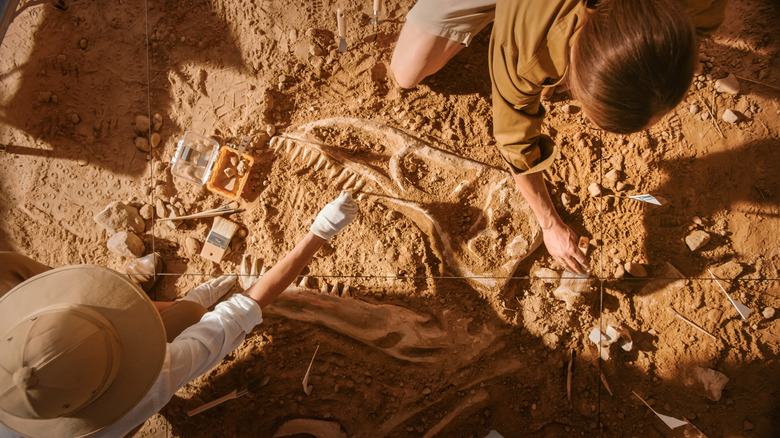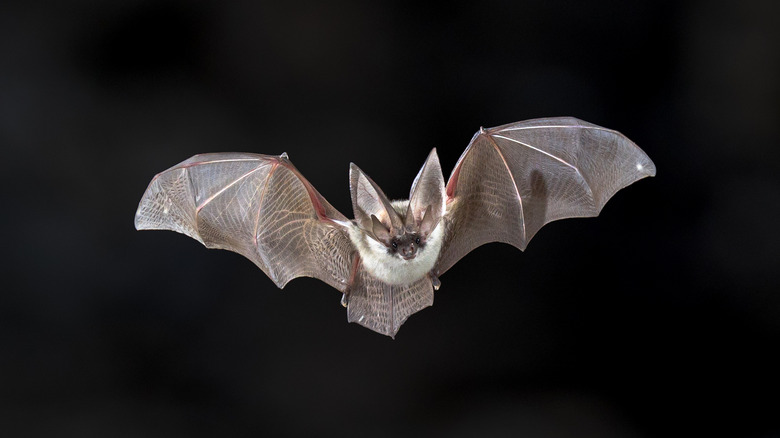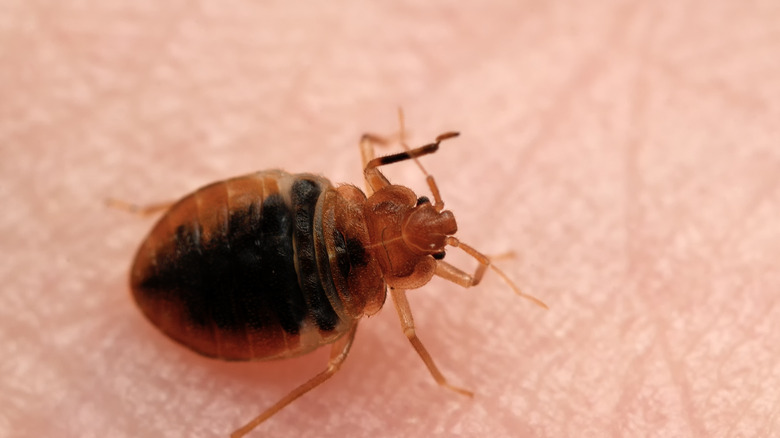A 100-Million-Year-Old Fossil Uncovered A Key Fact About Bedbugs
100 million years ago, dinosaurs ruled the earth: the fearsome Tyrannosaurus rex on land, reptilian winged predators in the skies, and mammoth aquatic lizards in the sea. But while most creatures living in the days of the dinosaurs are long extinct, scientists at the University of Sheffield in England discovered a particularly nasty hanger-oner — the lowly bedbug. The blood-sucking pest that's the bane of travelers everywhere has a long history here on planet earth. According to Phys.org, it's been around since the days of the T. rex.
Researchers revealed their findings in the scientific journal Current Biology in May 2019. The research runs counter to previously held beliefs on bedbugs, bats, and humans, their relationships with one another through the ages, and which one actually showed up first. The discovery also places the parasitic insect here on the planet 50 million years earlier than first thought. "To think that the pests that live in our beds today evolved more than 100 million years ago and were walking the earth side by side with dinosaurs, was a revelation. It shows that the evolutionary history of bed bugs is far more complex than we previously thought," Professor Mike Siva-Jothy, one of the researchers on the team, was quoted as saying by Phys.org.
Which one came first, the bat or the bedbug?
Researchers traveled to hot, dark, bat-poo-filled caves and war-torn countries to collect bedbug samples from over 30 different species, according to Science. Their effort to fill in the holes in the creature's family tree took 15 years and revealed several surprises, among them the answer to the question: Which came first, the bat or the bedbug?
Scientists once thought bats predated the bedbug, with the former first coming on the scene around 50 to 60 million years ago (via Phys.org). Bats were also believed to be the first creatures bedbugs dined on. But the research in Current Biology reveals bedbugs date back 115 million years, meaning they were actually here on earth long before the bat (per Science). So what were bedbugs eating before they feasted on the blood of bats? According to Phys.org, scientists don't have the answers to that yet, but they don't believe bedbugs were dining on dinosaurs. That's because bedbugs live off creatures that have a nest, a burrow, or a bed where they live or sleep, and nothing like that has been associated with dinosaurs.
Bedbugs find human hosts
The research also sheds new light on bedbugs' history with humans. It was thought that bedbug evolution followed human evolution, with two types of bedbugs branching off a common ancestor around 1.6 million years ago, when Homo sapiens split off from their common ancestor Homo erectus. But researchers found that the two bedbug types actually diverged about 47 million years ago, long before humans appeared, meaning bedbugs evolved independent of the human lines, according to Science. The study also found that while one species of bedbug may love to dine on a particular host, they're not wedded to that host and can switch back and forth among different hosts, while other species are more monogamous.
Researchers say they hope their findings will ultimately help find ways to prevent the transmission of "insect-vectored disease." "These findings will help us better understand how bedbugs evolved the traits that make them effective pests — that will also help us find new ways of controlling them," said University of Sheffield's Professor Mike Siva-Jothy, according to a university news release. For those of us who squirm at the thought of sleeping in a hotel bed, that is welcome news.


